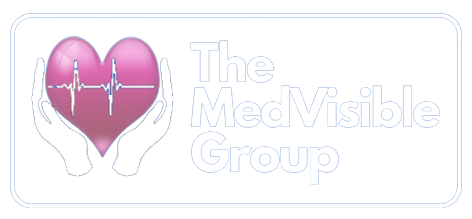Streamlining Healthcare: Benefits of Automation
May 23, 2023
In an era where healthcare staffing shortages have reached unprecedented levels, the need to alleviate administrative burdens for medical practices has become more critical than ever. Manual processes that consume valuable time and resources can hinder efficiency and compromise patient experiences. However, with the advent of automation technology, healthcare providers now have the opportunity to significantly reduce administrative workload while enhancing revenue and patient satisfaction. In this blog post, we will explore the benefits of automation in healthcare and delve into five key workflows that can be automated to streamline processes and revolutionize patient care.
1. Automated Recalls and Reactivations:
One of the most impactful automation workflows in medical practices is the automation of recalls and reactivations. Traditional methods involve manual identification of patients through report generation, followed by printing call sheets for follow-up. This not only proves to be inefficient but also ineffective.
Instead, employing a patient reactivation tool that automatically identifies and messages patients who haven't been seen in a specific timeframe and lack future appointments can make a world of difference. This technology not only reduces the burden on administrative staff but also leads to a 10% increase in appointment volume and a remarkable 20% surge in patient revenue.
Pro Tip: When selecting a reactivation tool, opt for one that features a "smart list engine" capable of building targeted patient follow-up campaigns triggered as soon as patients meet specific criteria. Examples include canceled/no-show appointments without rescheduling, patients who haven't been seen within a predetermined timeframe without future appointments, care protocol campaigns based on medical protocols, and pre/post-appointment educational campaigns.
2. Patient Texting:
Phone tag and inefficient communication methods can waste countless hours for both medical practices and patients. In today's world, patients are increasingly unresponsive to calls from unfamiliar numbers, making phone communication less effective. The solution? Texting!
Studies have revealed that texting is the preferred method of communication for the majority of patients. While concerns may arise about adding another channel to monitor, implementing two-way texting can, in fact, enhance efficiency and effectiveness while substantially reducing inbound and outbound call volumes.
Pro Tip: For patients who still prefer calls, consider experimenting with recorded messages in the voice of your providers. Patients are three times more likely to listen to provider-recorded calls, providing a personal touch to the communication process.
3. Appointment Reminders:
Appointment reminders play a crucial role in both the patient experience and administrative workload. Yet, many practices still rely on highly manual processes for sending reminders, which not only increases administrative burden but also poses the risk of missed reminders and patient no-shows.
To address this, automate the reminder process by utilizing multiple communication channels, such as email, text, and recorded calls. By automating reminders through various channels, the likelihood of patients missing an appointment reminder is significantly reduced. The benefits of automation in this area include increased appointment attendance, reduced workload for front desk staff, improved patient satisfaction through timely communication, and enhanced patient follow-up and retention.
Pro Tip: Look for an appointment reminder system that allows customization based on appointment type, provider, or location. This flexibility ensures that different appointment types receive the appropriate reminder cadences.
4. Referrals:
Physician referrals are vital to the success of many medical practices, but they can often be a headache to manage for administrative teams. The manual follow-up process, involving an average of four to five phone calls, can lead to referred patients getting lost in the shuffle or experiencing sporadic contact, ultimately resulting in subpar patient experiences and lost revenue.
Automation is the key to streamlining the referral management process. When referrals come in, patients should be automatically added to an outreach campaign aimed at scheduling their appointments. With an automated system tracking these interactions, comprehensive reporting can be provided to the referring provider, ensuring transparency and efficient management.
The benefits of referral automation are manifold: increased referral conversion rates, reduced outbound call volumes by up to 70%, and improved patient experiences, leading to higher patient revenue and reduced administrative workload.
5. Patient Education:
Patient education is pivotal in achieving successful outcomes and fostering patient retention. However, amidst the myriad responsibilities of administrative teams, patient education often takes a back seat. Leveraging technology can ensure that patients receive the necessary education at key touch points in their healthcare journey.
With the right tools, practices can deliver customized educational content to patients before their appointments. This personalized content not only prepares patients for their visits but also alleviates anxiety about what to expect. Practices can either develop their own content or utilize external resources tailored to specific specialties and appointment types.
Content delivery can be accomplished through email or text, with the option to embed videos for easy access and increased viewing rates.
Pro Tip: Seek out reputable resources such as professional medical associations that provide high-quality educational content relevant to your practice's specialty.
Conclusion:
Automation has emerged as a game-changer in the healthcare industry, offering solutions to alleviate administrative burdens, increase revenue, and enhance patient experiences. By automating key workflows such as recalls and reactivations, patient texting, appointment reminders, referrals, and patient education, medical practices can achieve greater efficiency, improved patient outcomes, and reduced workload for administrative staff. Embracing automation in healthcare can revolutionize the way we deliver care, ensuring a seamless experience for both patients and providers.
Remember, technology cannot solve every challenge, but leveraging automation where it makes the most significant impact can bring about substantial benefits and transform the future of healthcare.
This post was contributed by David Kreitzer, Head of Marketing and Operations at Vital Interaction, a leading patient communication solution for specialty medical practices.
